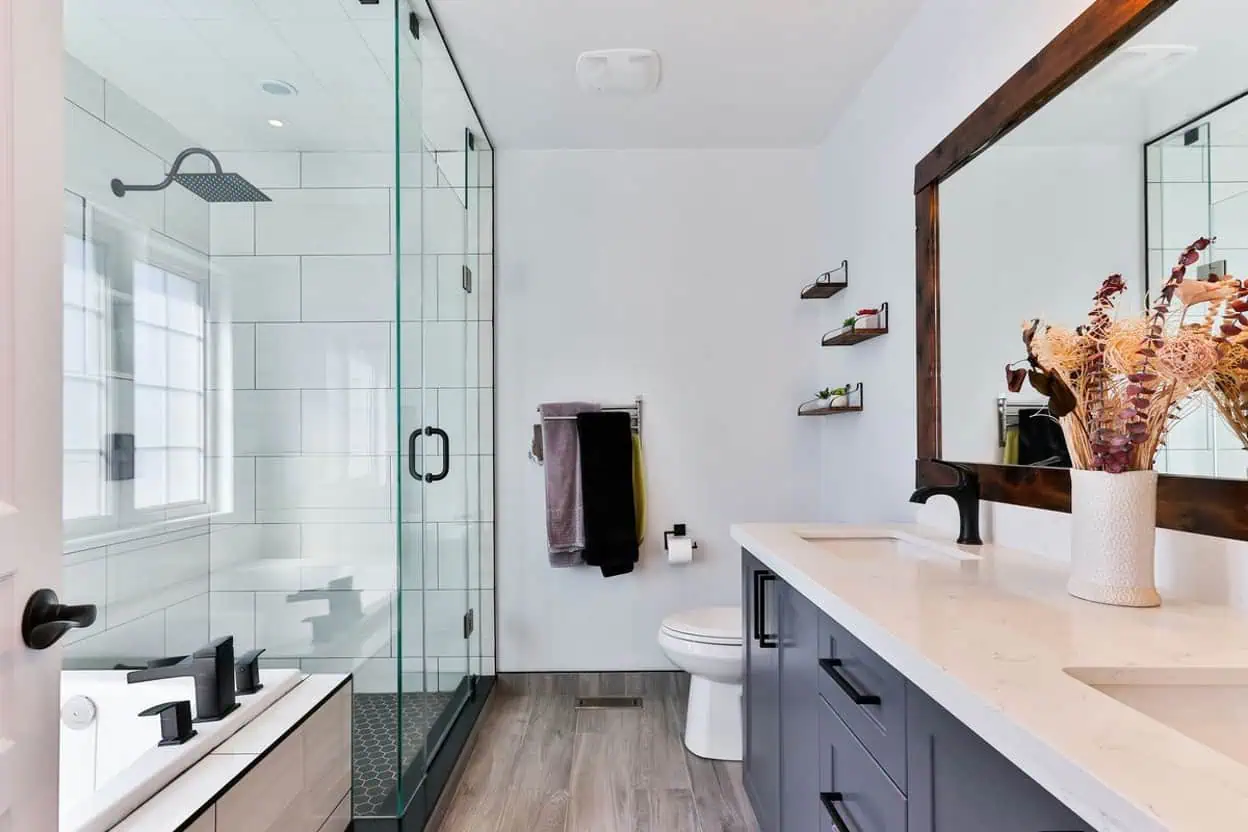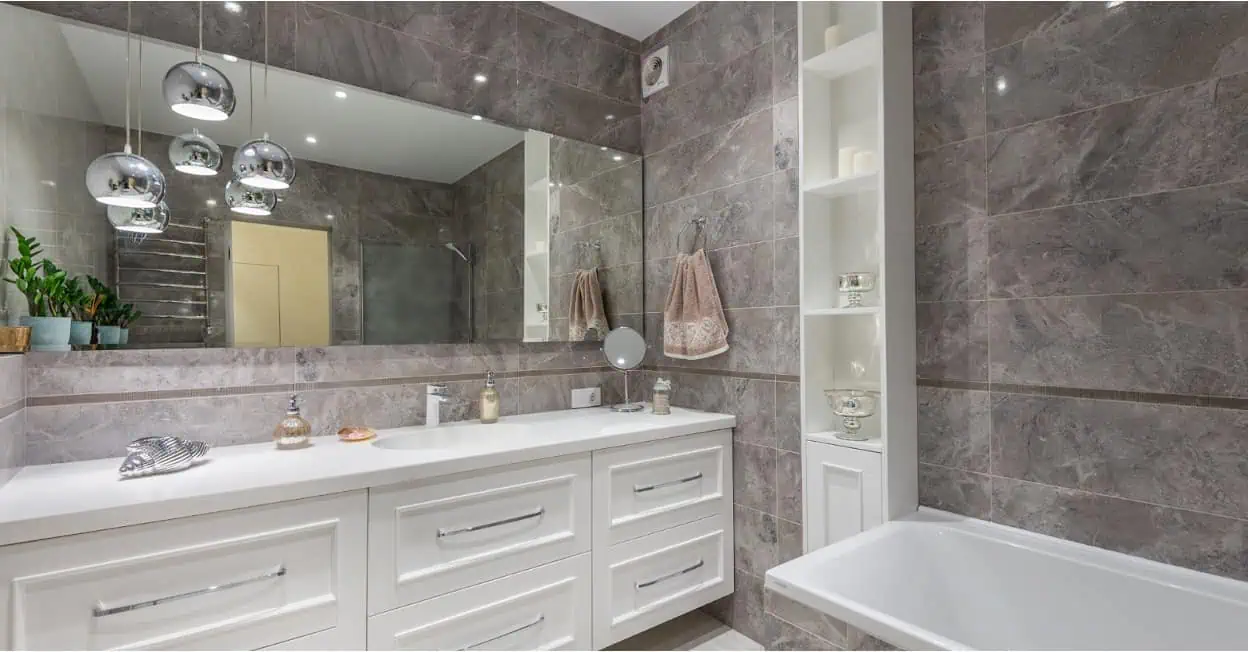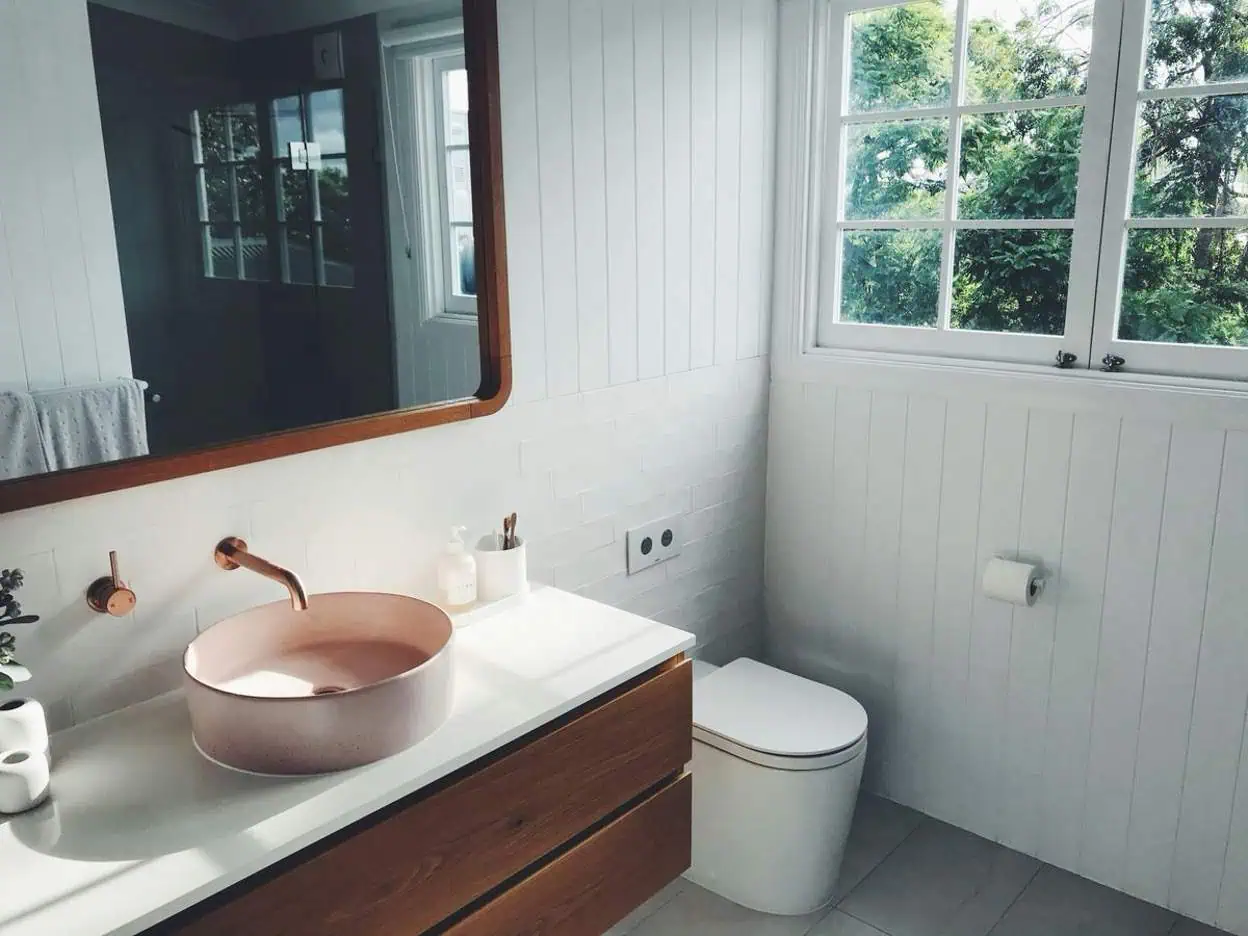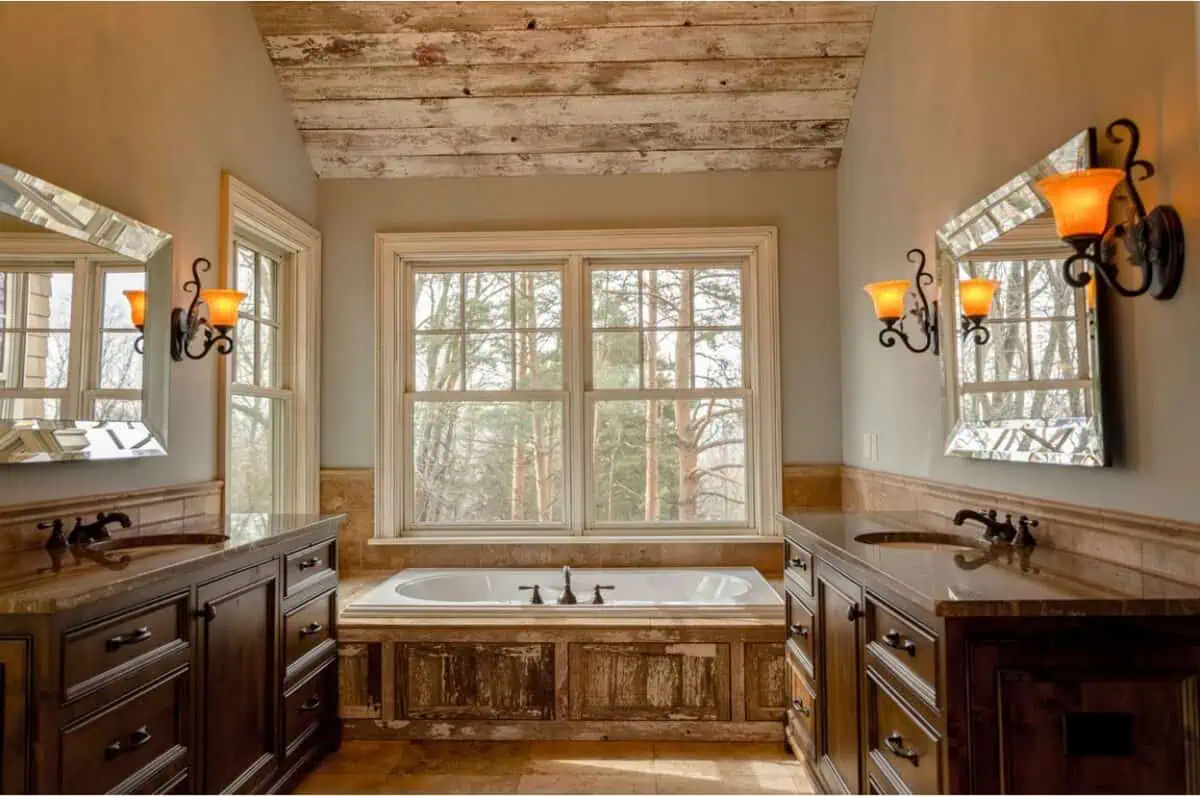The bathroom is no longer just a functional space – it’s a personal oasis where design and comfort intersect. As we move into this year, bathroom trends are evolving to reflect our changing lifestyles and desire for wellness sanctuaries within our homes.
From eco-friendly materials to smart technology integration, this year’s bathroom design is all about creating a luxurious yet sustainable retreat. Prepare to be inspired by the top trends redefining bathroom spaces, including organic textures, minimalist aesthetics, and innovative solutions that blur the lines between form and function.
Whether renovating or simply refreshing, these cutting-edge ideas will transform your bathroom into a rejuvenating personal spa.
The Global Bathroom Accessories Market Overview
Leading brands like Procter & Gamble, Unilever, and L’Oréal dominate the competitive bathroom accessories market. Brand loyalty and emotional connections drive consumer choices. Global supply chains impact product availability, with companies adapting strategies like e-commerce prioritization and micro-fulfillment centers to meet demand.
Leading Brands and Market Share
The global bathroom accessories market is a competitive arena with several key players dominating the landscape. Procter & Gamble Company, Unilever plc, and Johnson & Johnson Consumer Inc. are among the giants with significant market shares, thanks to their extensive product ranges and strong consumer trust.
Brands such as L’Oréal S.A., Henkel AG & Co KGaA, and Colgate-Palmolive also play a pivotal role, offering various products that cater to diverse consumer needs. Emotional attachment and brand loyalty are crucial, as highlighted by Gensler’s 2013 Brand Engagement Survey, indicating that customers often gravitate towards brands they trust and feel connected to.
The market is not just limited to these household names; it includes many specialized brands like L’Occitane en Provence, The Body Shop, and Dr. Bronner’s, which have carved out niches for themselves with unique offerings. The following list showcases some of the prominent brands in the market:
- Kao Corporation
- Beiersdorf AG
- ITC Limited
- Amway
- Shiseido
- Natura & Co
These brands’ market presence is bolstered by their participation in industry events such as The Kitchen & Bath Industry Show (KBIS), a platform for showcasing innovations and strengthening brand visibility.
The Impact of Supply Chain on Product Availability
The global supply chain is a critical factor in the availability of bathroom accessories. Rising costs of raw materials and logistics and disruptions pose significant challenges for companies. These supply chain issues for bathroom developers can lead to supply chain bottlenecks, affecting the timely delivery of products to the market.
Companies are exploring various strategies to adapt to the changes. For instance, the boom in e-commerce has shifted transportation logistics to prioritize speed and efficiency. Intermodal transportation is emerging as a cost-effective solution to meet consumer demand.
Additionally, implementing micro-fulfillment strategies enhances last-mile delivery, which is crucial for online shopping.
The warehousing and distribution sectors are also evolving. A labor force shortage has accelerated the adoption of automation in warehouse operations. Designing successful logistics centers now involves considerations that address last-mile delivery challenges, ensuring that bathroom accessories reach consumers without delay.
Innovations Driving Bathroom Design Trends
Smart bathroom technologies like digital showers and toilets offer customization and hygiene enhancement. Eco-friendly, sustainable solutions utilizing efficient logistics networks and recycled materials are growing trends. Material selections prioritize aesthetics, sustainability, and resilience, while personalization through bespoke fixtures increases.

Smart Bathroom Technologies
The intersection of technology and wellness is revolutionizing bathroom design, with smart bathroom technologies emerging as a pivotal trend. Innovations such as digital showering systems and smart toilets are at the forefront, offering users unprecedented control over their bathroom experience.
These advancements enhance comfort and contribute to a holistic sense of well-being.
Key features of smart bathroom technologies include:
- Customizable water delivery and temperature settings
- Integrated steam functions
- Hygiene enhancement through touchless interfaces
- Energy-efficient solutions that reduce water and electricity consumption
As bathroom design trends evolve, the focus on personal care is also intensifying. Innovations like Micromoisture technology are being developed to offer deep skin nourishment, showcasing how technology is not just about functionality but also about enhancing personal wellness.
Integrating these technologies into bathroom design is a testament to the growing importance of creating spaces catering to functional needs and personal safety.
Eco-friendly and Sustainable Solutions
The eco-friendly and sustainable movement in bathroom design is not just a trend; it’s a response to the growing awareness of environmental issues and the role of the bathroom as a space for conservation.
The Impact of Global Logistics on Bathroom Design Trends is significant, as it influences the availability and selection of sustainable materials and products. Global logistics in bathroom design plays a crucial role in determining how these eco-conscious solutions are implemented.
- The sourcing of low-impact materials often depends on a complex global supply chain.
- Innovations in water-saving technologies are being adopted worldwide, thanks to efficient logistics networks.
- The transportation of recycled and upcycled materials for bathroom fixtures requires careful planning to minimize carbon footprint.
As we look toward Bathroom Design Ideas it’s clear that the blend of style and innovation will continue to be shaped by the sustainability ethos. The choices made at the logistics level will directly impact the eco-friendly options available to consumers, driving the industry towards more responsible design practices.
Trends in Bathroom Furniture and Fixtures
Designers explore innovative material combinations to create unique textures catering to personalized, distinctive spaces. Customization leads to a rise in bespoke bathroom furniture reflecting individual styles. Personalization through technology integration and the desire for unique, tailored experiences fuel this trend.

Material and Design Preferences
The selection of materials in bathroom design has evolved to prioritize aesthetics, sustainability, and resilience. Smart material choices are now at the forefront, reducing the environmental impact through lower embodied carbon levels. This shift is evident in the growing preference for durable and eco-friendly materials.
Key considerations in material selection include:
- Longevity and ease of maintenance
- Environmental footprint during production and disposal
- Health implications for occupants
Designers are also exploring innovative combinations of materials to create unique textures and patterns, catering to a market that values personalized and distinctive spaces. The trend towards customization is leading to a rise in bespoke bathroom fixtures and furniture, reflecting individual style and functional requirements.
The Rise of Personalized Bathroom Spaces
The evolution of bathroom design is increasingly reflecting individual preferences and lifestyles. Personalization is becoming a hallmark of modern bathroom spaces, with homeowners seeking to create areas that are functional and express their personal style and comfort. A variety of factors fuels this trend:
- The desire for a unique, tailored experience
- The availability of customizable fixtures and materials
- The integration of technology that allows for personalization
As highlighted by Decorilla, innovative interior design is at the forefront of these exciting bathroom trends, with fresh ideas and eco-friendly upgrades becoming more prevalent. As the market for personal care shower and bath products is projected to grow significantly, reaching $84.01 billion by 2028, the emphasis on health, well-being, and environmental sustainability is evident.
This growth is driven by a demand for natural and organic ingredients and a push for products that support clean beauty and ‘free-from’ claims. The future of bathroom design is not just about aesthetics; it’s about creating a space that resonates with the users’ values and lifestyle choices.
The Role of Market Reports and Forecasting
Analyzing market reports provides insights into industry dynamics, consumer behavior, and competitive landscapes. Forecasting identifies emerging markets and projections like smart home integration demand. Understanding market data guides strategic business decisions to stay ahead of evolving trends.

Analyzing Market Dynamics and Consumer Trends
Understanding the market dynamics and consumer trends is crucial for bathroom product industry stakeholders. The market is influenced by various factors, including technological advancements, economic conditions, and evolving consumer preferences.
For instance, the growing demand for eco-friendly and smart bathroom solutions reflects a shift towards sustainability and convenience.
Key insights can be gleaned from analyzing market reports, which often include:
- An executive summary of the industry’s current state
- A detailed segmentation of the market by product type
- Insights into consumer behavior and purchasing patterns
- A review of the competitive landscape, including mergers and acquisitions
These reports provide a comprehensive market view, helping businesses strategize and adapt to the changing landscape. The Bathroom Products Market Size, Share, Industry Analysis Report forecasts significant growth, projecting the market size to reach $189.37 Bn by 2028.
This growth is indicative of the industry’s potential and the importance of staying abreast with market trends and consumer demands.
Future Projections and Emerging Markets
As we look toward the horizon of bathroom design, emerging markets are poised to play a pivotal role in shaping trends and consumer preferences. With urbanization and economic growth, new demographic segments demand innovative solutions catering to their specific needs.
Key projections for the future include:
- The integration of advanced technologies for enhanced user experience and convenience.
- A surge in demand for eco-friendly materials and water-saving fixtures as sustainability becomes a priority.
- The rise of personalized bathroom spaces reflects individual tastes and lifestyle choices.
Market reports suggest that the bathroom accessories market will continue to evolve, with a strong emphasis on customization and smart home integration. These trends, driven by technological advancements and consumer consciousness, indicate a future where the bathroom transcends its traditional role, becoming a wellness and personal sanctuary space.
Understanding the dynamics of the market is crucial for making informed business decisions. Market reports and forecasting provide insights into industry trends, consumer behavior, and economic shifts. By leveraging this data, businesses can strategize effectively to stay ahead of the competition.
Conclusion
In conclusion, the intricate web of global logistics profoundly influences the evolution of bathroom design trends. From the omnipresence of leading brands to innovative smart technologies and sustainable solutions, the future of bathroom design is shaped by many factors, including material preferences, personalized spaces, and the need for inclusivity and comfort.
Market reports and forecasting play a pivotal role in understanding these dynamics, guiding designers and manufacturers toward meeting the demands of an ever-changing consumer base.
As we look ahead, it is clear that the bathroom will continue to be a space of convergence where functionality, design, and user experience intersect to create environments that are aesthetically pleasing and cater to the nuances of human behavior and environmental consciousness.
Article and permission to publish here provided by Tryggvi Sigurbjarnarson. Originally written for Supply Chain Game Changer and published on April 9, 2024.
Images provided by Tryggvi Sigurbjarnarson.

